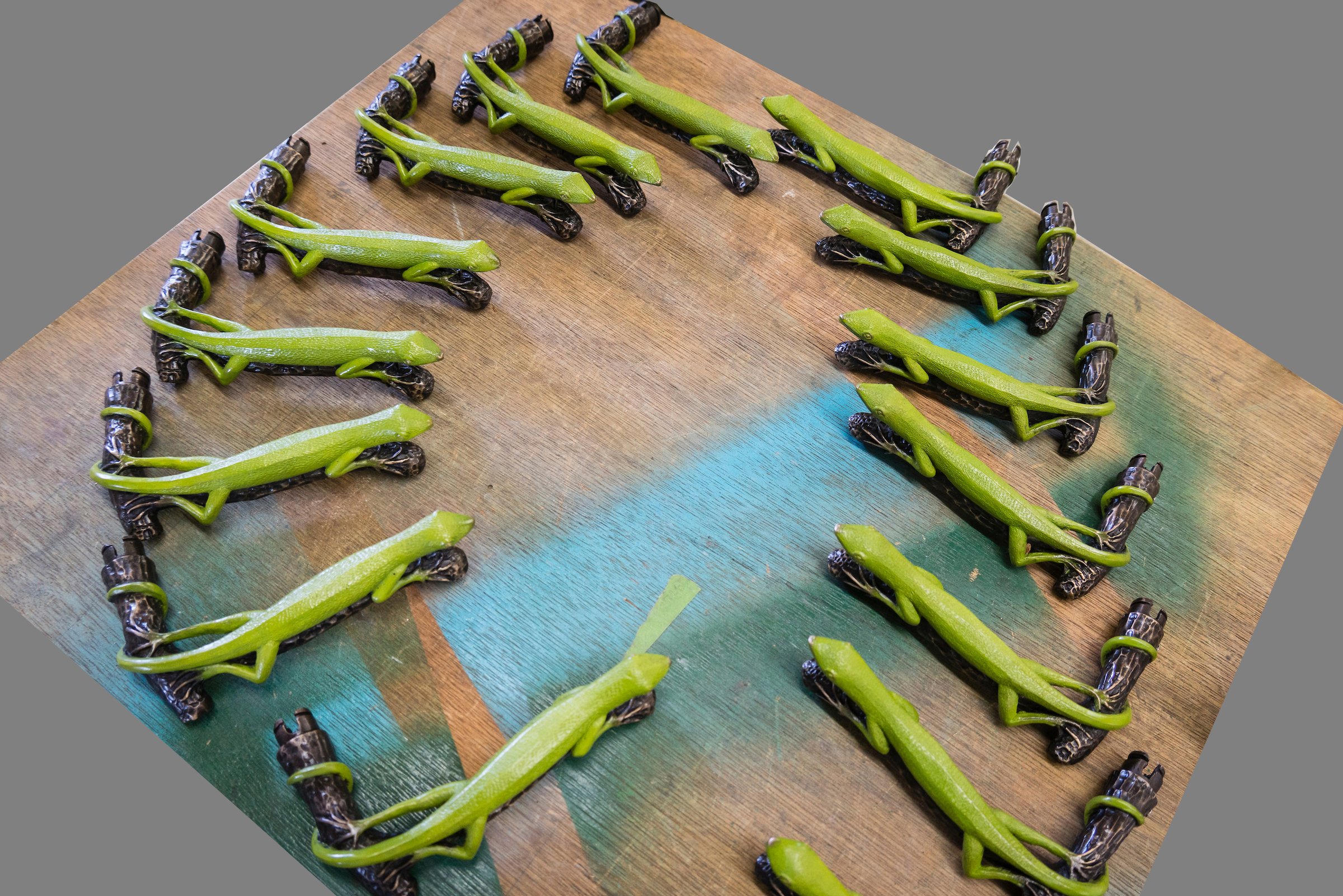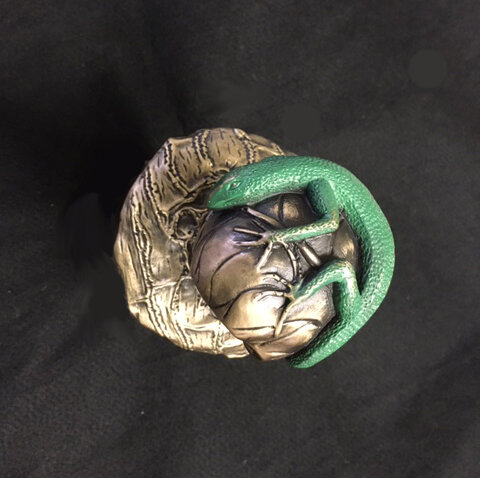Arguably, from a door handle perspective, Florida can be one of the most demanding climates. The state is a peninsula surrounded by sea water and its latitude yields many days of sunshine and not surprisingly is home to many of our clients.
UV Impact on Bronze
When we hot patina a door or cabinet pull we heat the bronze with a torch and apply successive coats of pigment suspended in water to the metal surface which absorbs the pigment left after the water evaporates. The patina absorbs UV and this leads to a chemical change that breakdowns the bonds between the pigment molecules making the color appear less vibrant. The lizard levers below will fade over time with UV exposure so what are the options?
Photo of lizards at patina stage before sealant applied. Photo courtesy of the photographer Maria Ramirez-Adams.
How to lessen UV impact
Clear polyurethane resin and polyester offer 2 different ways of sealing and protecting the color.
Polyurethane acts as a UV blocker and as a resistant physical barrier that shields the color beneath. It blocks the UV by absorbing, deflecting and scattering the UV away from the metal surface thereby slowing chemical changes in the patina.
Clear polyurethane resin also creates a physical barrier that shields the layers beneath from UV and also from salt and environmental contaminants that can degrade the patina. The resin is typically sprayed onto the surface and air dried rather than baked.
Polyester versus powder coat
Polyester is also an excellent sealant for protecting metal from UV and salt and environmental degradants. The practical difference lies in how they are applied and cured. Polyester is applied as a powder using an electrostatic process. The piece to be coated is attached to a copper frame or rod which negativley charges it. The applicator, which is like a spray gun is positively charged and when fired the gun sprays powder onto the surface of the object. In simple terms think of physics 101 when a magnet is used to attract iron filings. The powder bonds to the surface of the object. To make the bond more permanent the coated object is baked to a temperature of 350 to 400 degrees for at 10+ minutes. With polyurethane the finish cures over a longer period often taking 5 to 7 days to complete. The Geckos shown here were both hot patinaed with a green pigmented solution but the top gecko was first dipped in a cold dark solution and then both were coated with polyester and baked. Polyester makes the pieces a little plastic in appearance but it does offer a resilient seal that will last for years.







